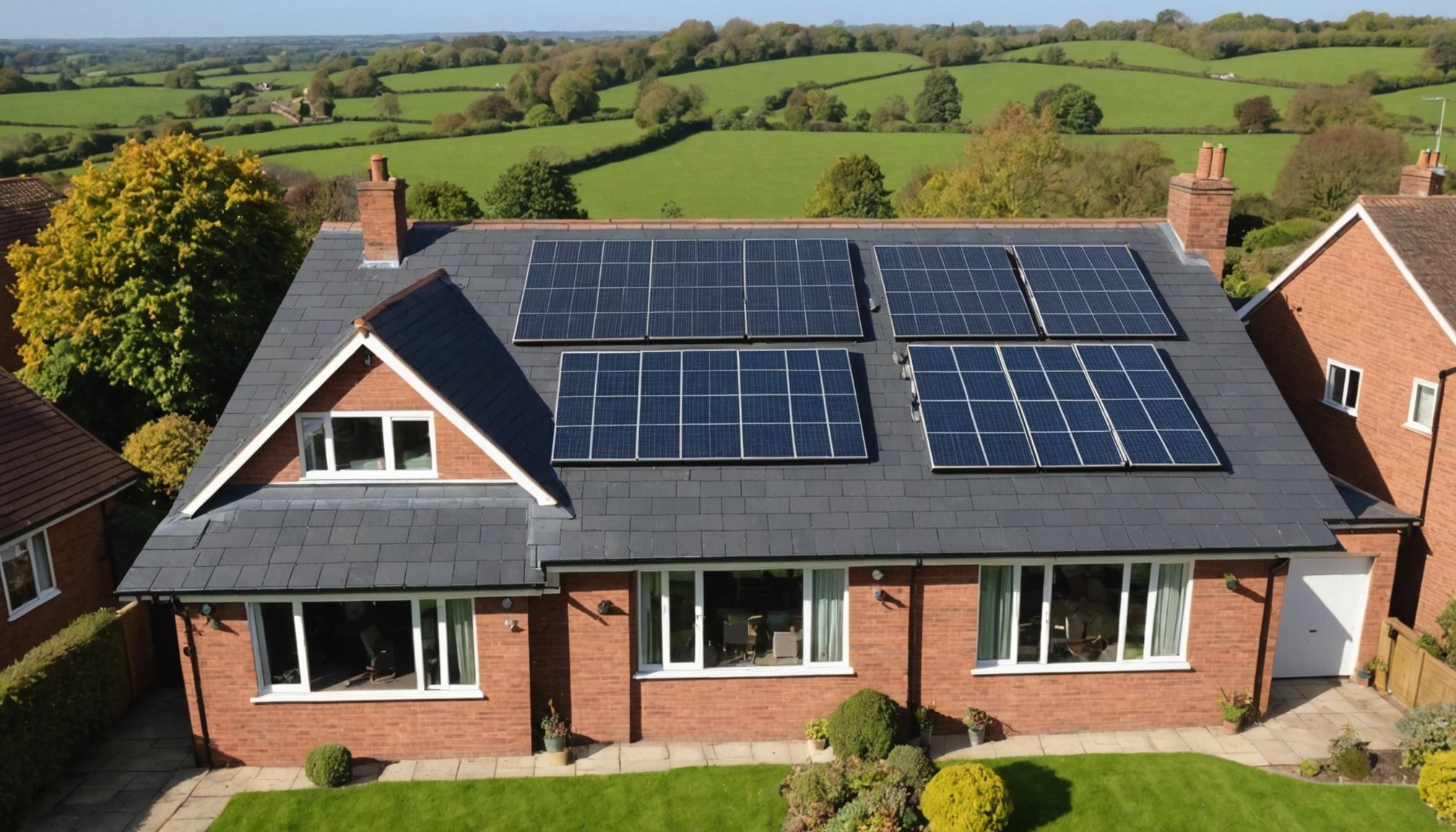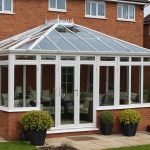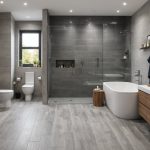Embracing solar roofs in your semi-detached home can elevate not only your energy efficiency but also your property's aesthetic appeal. Discover innovative designs and seamless installation solutions tailored for UK residences. With the right approach, you can harmonize sustainability with style, ensuring your home stands out without compromising its charm. Explore how these aesthetic enhancements can redefine your living space while contributing to a greener future.
Overview of Solar Roof Options for Semi-Detached Homes
When considering the integration of solar roofs in semi-detached homes, it's crucial to explore the variety of options available. Solar panel designs have evolved, offering homeowners choices that suit both functional and aesthetic needs.
A lire également : Transform Your Small UK Urban Backyard into a Tranquil Zen Garden: A Step-by-Step Guide
There are primarily two types of solar roofs: traditional solar panels and solar tiles. Traditional solar panels are mounted above the existing roof and are often more visible. They are typically less expensive and can be installed on most roof types. On the other hand, solar tiles are designed to blend seamlessly with the roof, providing a more discreet appearance. These are particularly appealing for homeowners concerned with maintaining the architectural integrity of their homes.
Comparing traditional vs. solar roof aesthetics reveals that solar tiles offer a more integrated look, which can enhance the visual appeal of semi-detached homes. This is especially beneficial in neighbourhoods where maintaining a cohesive architectural style is important.
En parallèle : Maximizing Space: Creative Ways to House a Large Family in a Three-Bedroom UK Home Without an Extension
Integrating solar roofs into existing architecture not only improves energy efficiency but also increases property value. Solar roofs are designed to withstand various weather conditions, providing durability and sustainability. For semi-detached homes, this means a harmonious blend of modern technology with traditional design, ensuring both environmental and economic benefits.
Aesthetic Considerations for Installation
When incorporating solar roofs into semi-detached homes, achieving aesthetic appeal is paramount. Selecting the right colors and materials can significantly impact the overall design integration. Homeowners often opt for solar tiles that mimic traditional roofing materials, ensuring architectural harmony while maintaining energy efficiency.
Innovative designs in solar technology have made it possible to enhance the visual appeal of homes. These designs offer a variety of options, such as sleek solar tiles that blend seamlessly with existing rooflines. The choice of materials can range from textured finishes to smooth surfaces, allowing homeowners to select a style that complements their home's architecture.
Case studies of successful solar roof integrations highlight the potential for enhanced curb appeal. In several instances, homeowners have reported an increase in property value after installing aesthetically pleasing solar solutions. These cases demonstrate how a well-thought-out installation can harmonise with the neighbourhood's architectural style, providing both functional and visual benefits.
Choosing a solar roof that aligns with the home's design not only boosts its aesthetic value but also ensures that the installation is a cohesive part of the overall architectural vision.
Installation Processes and Guidelines
Embarking on a solar roof installation requires careful planning and adherence to specific installation guidelines. The process typically begins with a thorough assessment of the roof's condition and structural integrity. This step ensures that the roof can support the weight of the solar panels or tiles.
Once the roof is deemed suitable, the next phase involves selecting a reputable contractor. Key factors in contractor selection include verifying credentials, examining past projects, and ensuring they offer a comprehensive warranty. A proficient contractor will provide a detailed plan, including timelines and costs, ensuring transparency throughout the project.
During installation, common challenges such as weather delays or unexpected roof repairs may arise. Solutions include scheduling flexibility and having contingency plans for potential issues. It's crucial for homeowners to maintain open communication with their contractor to address these challenges promptly.
The installation process concludes with a final inspection to ensure compliance with safety standards and optimal system performance. By following these guidelines, homeowners can achieve a successful and efficient solar roof installation, enhancing both energy efficiency and property value.
Benefits of Solar Roofs
Integrating solar roofs into semi-detached homes brings numerous advantages, enhancing both the property's functionality and appeal. One of the primary benefits is improved energy efficiency, which translates to significant energy savings. By harnessing solar power, homeowners can reduce utility bills, offering a sustainable solution to rising energy costs.
Moreover, solar roofs contribute to an increase in property value. Homes equipped with solar technology often see a boost in market appeal, as potential buyers are drawn to the long-term savings and environmental benefits. This makes solar roofs a sound investment, as they enhance the property's attractiveness and financial worth.
Adopting solar technology also yields substantial environmental benefits. By decreasing reliance on fossil fuels, solar roofs help reduce carbon footprints, contributing to a cleaner and more sustainable environment. This aligns with global efforts to combat climate change, positioning homeowners as proactive participants in environmental conservation.
In summary, the integration of solar roofs in semi-detached homes offers a trifecta of benefits: decreased energy bills, increased property value, and positive environmental impact. Embracing solar technology not only supports sustainable living but also enhances the overall quality and marketability of the home.
Financial Incentives and Regulations in the UK
Navigating the landscape of solar incentives in the UK can be a rewarding journey for homeowners. The government has introduced several programs to encourage the adoption of solar technology. These include the Smart Export Guarantee (SEG), which allows homeowners to earn money by exporting surplus energy back to the grid. This initiative not only makes solar roofs financially attractive but also supports the national grid's sustainability efforts.
Government regulations play a crucial role in shaping the solar market. The UK government has set ambitious targets for renewable energy, which influence policies and incentives. Homeowners should be aware of building regulations and planning permissions that may apply to solar installations, ensuring compliance and maximising potential benefits.
When considering solar roofs, various financing options are available. Homeowners can explore green loans, which offer favourable terms for sustainable projects. Additionally, some energy companies provide solar panel leasing, allowing homeowners to install solar roofs with minimal upfront costs. These financial solutions make solar technology accessible to a broader audience, encouraging widespread adoption and contributing to environmental goals.
In summary, understanding the financial incentives and regulations is essential for homeowners looking to invest in solar roofs, offering both economic and environmental advantages.
Visual Inspiration and Design Resources
Exploring solar roof designs can be both exciting and rewarding for homeowners seeking to enhance their property's appeal. A variety of visually appealing options exist, from sleek, modern panels to traditional-looking solar tiles that blend seamlessly with existing architecture. These designs not only improve energy efficiency but also elevate the aesthetic value of homes.
For those seeking visual inspiration, numerous online platforms showcase real-life examples of solar roof installations. Websites dedicated to green architecture often feature galleries of innovative designs, highlighting the potential of solar roofs to transform the look of semi-detached homes.
To aid in the decision-making process, several design resources are available. Home improvement magazines and architectural journals frequently cover trends in solar technology, providing insights into the latest styles and materials. Additionally, social media platforms like Pinterest and Instagram offer a plethora of images and ideas for homeowners to consider.
Tools for visualising solar roofs on your home, such as 3D modeling software and augmented reality apps, allow homeowners to experiment with different designs before making a commitment. These tools provide a realistic preview of how various solar roof designs will look, helping homeowners choose a style that complements their home's architecture.












